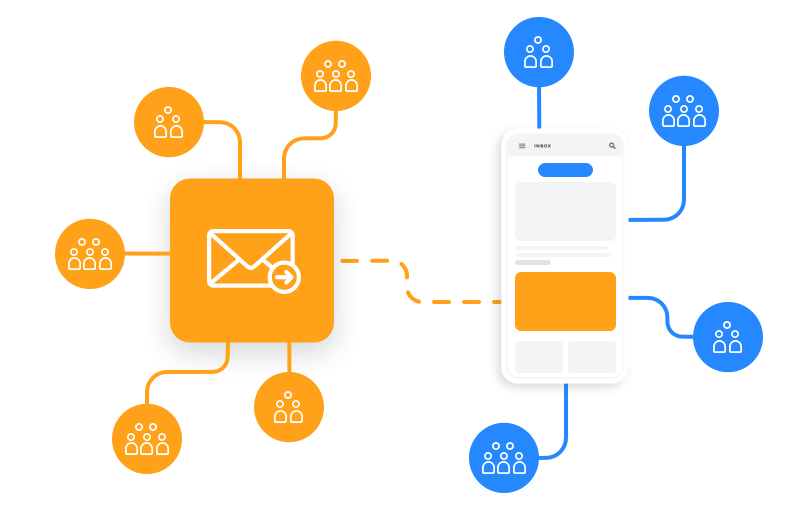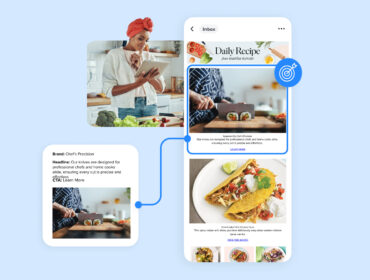5 email marketing tactics to drive holiday sales
It’s going to get a little crowded in the email inbox for brand publishers this holiday season. With more people online, surging email engagement rates, and a bleak in-store sales outlook, we’re seeing a significant pivot to e-commerce.
That means the industry will further embrace and lean into email as its go-to channel more than in pre-pandemic days. Here’s what you need to know to stay ahead of the game with your holiday marketing.

Email is a valuable tool for brand publishers
The pandemic may have placed a greater emphasis on the power of email in driving sales and engagement. But here’s the thing: Email was already a major tool for brand publishers.
For online-only and in-store/digital hybrid brands alike, email is a proven, high-engagement channel with massive ROI. It wasn’t essential for brands to rely on email to build relationships with their customers just a few years ago—but that’s no longer the case. A January 2020 report showed that a whopping 88% of brands use email to communicate with their customers.
Email also provides a much-needed antidote to growing concerns about the cookie apocalypse—the impending moment when Google Chrome will remove third-party cookies from its browsers. Since brands will be unable to rely on cookies to track customers, they’ll need to collect first-party data instead. Do you know what makes for some excellent first-party data? Email addresses—they’re easy to track, are provided directly by customers, and are widely used across the web.
Consumers are spending more time online and in email
Brand publishers aren’t the only ones who love email. The pandemic has changed consumer behaviors, driving many to spend more time online—a 60-minute increase from last year. With more attention on devices, more audiences spend time reading email newsletters. According to a recent LiveIntent study, 53% of publishers reported an increase in engagement with their email newsletters and 50% saw a jump in subscriptions and memberships. Additionally, 71% of publishers are leveraging email newsletters to increase acquisition after noticing increases in engagement.
The stakes are higher than ever
The stakes are at an all-time high in Q4. Brand publishers are turning to e-commerce to make up for revenue lost during the pandemic. Why? Because most US adults are planning to avoid in-store holiday shopping this year, and brick-and-mortar sales are almost certain to decline sharply as a result. With a projected increase of 25-35% in online holiday sales this year, the retail industry has shifted toward digital properties and away from brick-and-mortar. It’s no surprise then, that to make the most of this unique holiday seasons brands are turning to a steadfast, reliable, and direct channel they can trust: email.
5 holiday email marketing tactics to try
With an increased emphasis on email, brands must set themselves apart from the competition to ensure success. Here are five email tactics to help drive acquisition and sales this holiday season.

1. Use your own email inventory to run customer acquisition campaigns
Devote a little space in your newsletter to put your own promotions in front of your most engaged audience—your customers.
You can build audience segments based on customer behavior and interests, and target repeat readers and engaged users who are most likely to convert. With this customer data at your fingertips, you can personalize your newsletter ads and start transforming those long-term members into paid subscribers.
Try using these email acquisition best practices to drive results:
- Keep copy and creative simple, especially for mobile users navigating smaller screens.
- Launch a dedicated landing page that delivers on your ad’s promise and provides a seamless user experience.
- Deliver value by emphasizing the benefits customers receive in exchange for their subscription and information.

2. Suppress for marketing efficiency
Suppression can be just as powerful as hyper-targeting. Take a look at your first-party data and identify segments of customers who have taken a desired action—subscribing, starting a trial, or purchasing a specific product, for instance. From there, you can optimize your marketing efforts by suppressing these customers, ensuring they don’t receive any irrelevant product ads. This strategy ultimately helps enhance your newsletter’s customer experience and maintains brand integrity.
Check out how Groupon upholds customer experience in their email newsletters.

3. Extend your audience to expand your reach
Go beyond the reach of your own newsletter and start advertising in other premium publishers’ newsletters—those with relevant audiences, of course. Because who’s most likely to subscribe to your newsletter? People who are already subscribed to other newsletters and enjoy receiving personalized content from publishers that match their interests.
COVID-19 caused supply chain and logistical issues this year for brands and retailers worldwide, leading to a shift in consumer loyalty. Without convenient or regular access to many of their usual staples and favorite goods, 50% of consumers tried new brands in 2020, according to PwC. Now is a great time to expand your audience reach and inspire potential customers to explore what your brand has to offer. Consumers might be more inclined to check out and purchase your products if your brand provides added convenience, like free delivery or complimentary gift-wrapping.

4. Use personalized remarketing to convert on abandonment and drive sales
We’re not done with that first-party data just yet. You can use this data to personalize your remarketing campaigns and reach customers who’ve already completed a desired action across your website, app, and emails.
Check out these use cases for inspiration:
- Use case #1: Build an audience of website visitors who have expressed interest in a product or even put it in their cart but haven’t purchased yet. Then, target that audience with a re-engagement ad, encouraging them to complete their purchase.
- Use case #2: Build an audience of website visitors who have browsed pages within a particular section of your website. Then, target that audience with ads for a specific product or the launch of a new product or service relevant to that content.

5. Promote referral incentives and holiday offers
Encourage loyal subscribers to share the love and recruit their friends by offering a gift, credit, or discount for each referral. For example, Retailer ZooShoo gives new, referred customers $10 off of their first order over $40. In return, the referrer receives $10 off their next order. It’s a win-win-win situation
You can also start a holiday gift-subscription campaign just for the season. Invite customers to gift discounted subscriptions to your services or premium content. Your loyal customers can share their favorite products and experiences with loved ones, and your business gains new customers in the process.
‘Tis the season to send emails
This year may have been rocky and unpredictable, but one marketing channel has persevered throughout: email. It reaches people right in their inboxes and keeps them connected to the content and companies that matter most when it matters most (like during a pandemic and a stressful holiday season).
Customers are privy to the benefits of email, but so are other brands and publishers. Don’t let your competitors get ahead of you. Implement theses strategies to stand out from the crowd, generate engagement, and drive holiday sales through the year’s most important marketing channel.


